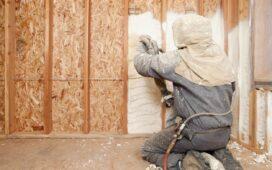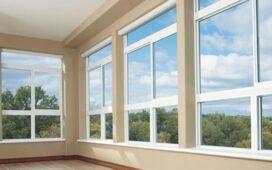Looking around at modern-day HVAC systems, ducted refrigerated air conditioning is a testament to innovation and efficiency. Consistently providing superior comfort with precise climate control ability, a series of ducts carry cooled air to every room in a building, maintaining perfect temperatures all year round. With the power to provide the ultimate comfort and appealing custom cooling solutions, ducted refrigerated air conditioning is popular with homeowners, and commercial establishments have also experienced a surge. It’s the next generation of temperature control technology, embodying the pinnacle of interior comfort and energy efficiency that can be attained via advanced engineering and user-centred design.
This tutorial will cover the features of ducted refrigerated air conditioning systems, their operation, their advantages, how to install one, and how to maintain one.
What Is Ducted Refrigerated Air Conditioning?
The refrigeration idea involves drawing warm air into the system and chillin it via heat exchange, is how ducted refrigerated air conditioning works. A system of ducts is then used to cycle the air back into space. Unlike traditional split-system air conditioners, which use separate inside units, ducted air conditioning systems centralise the cooling process, keeping the building at a consistent and steady temperature. This centralised method ensures an intimate, consistent level of comfort and maximises economy and simplifies maintenance, making it an excellent option for residential and commercial applications requiring ultimate temperature management.
Benefits of Ducted Refrigerated Air Conditioning
Ducted refrigerated air conditioning systems have various advantages:
- Effective Cooling: Ducted systems are renowned for their effectiveness since they can rapidly and effectively cool large spaces without requiring multiple units.
- Zoning Capabilities: The ability to zone ducted refrigeration air conditioning is one of its most prominent benefits. By dividing the home into zones, residents may optimise comfort and energy efficiency by individually regulating the temperature in different areas.
- Whisper-Quiet Operation: Modern ducted systems are intended to work silently, causing minimum disturbance to everyday activities or conversations.
- Increased Visual Appeal: Since only a few discrete grilles are exposed in the walls or ceiling, ducted systems seem more sleek and discrete than traditional wall-mounted units.
- Improved Air Quality: Ductless air conditioners use state-of-the-art filtration technology to eliminate dust, allergens, and other airborne pollutants, thus creating a cleaner indoor environment.
Installation Process
A qualified air conditioning Mandurah specialist will carefully plan and install a ducted refrigerated air conditioning system. Here is a summary of the normal installation process:
- Consultation and evaluation: To determine the ideal system size, duct arrangement, and zoning regulations, a qualified HVAC professional will do a thorough building examination.
- Installation of Ductwork: The specialist will install ductwork to guarantee adequate distribution and airflow throughout the building after the design plan is finished.
- Installation of the Unit: Air handlers and filtration systems, among other parts, are installed next to the main unit, which is often placed outside the building.
- Electrical cable: To power the system and enable interaction between the main unit and several zone controllers, an electrical cable will be placed.
- Testing and commissioning: A comprehensive system check after installation will guarantee that every part is operating as it should. To guarantee optimal functioning, the technician will additionally programme the zoning controls and adjust the system.
- Maintenance and Handover: Once the test is satisfactory, the expert will provide a thorough handover, explaining how to use the system and proposing upkeep to extend its life.
Maintenance Requirements
Regular maintenance is necessary for all home HVAC systems, including ducted refrigeration systems. Key maintenance tasks include:
Filter Cleaning or Replacement
Maintaining a system’s filters per the manufacturer’s guidelines to clean or replace them is important. Dirty filters do more than restrict airflow; they also reduce system efficiency and can even compromise indoor air quality. A system with neglected filters will also use more energy, cost more for the homeowner to operate and could eventually suffer from an avoidable malfunction. By keeping filters clean, you help to ensure that the system lives up to its expected performance and longevity and keep indoor air quality at an acceptable level.
Duct Inspection
An HVAC system cannot operate as it should if the ductwork isn’t perfect. Regular ductwork inspections may reveal leaks, blockages, or damage that might reduce interior comfort levels, increase energy expenses, or decrease system performance. Timely resolving ductwork problems found during routine inspections enhances system functionality, elevates indoor air quality, and extends system lifespan.
Coil Cleaning
Each year, dirt and debris build-up on evaporator and condenser coils, so clean them. This accumulation reduces heat transmission and increases energy usage. Cleaning these coils and maintaining your HVAC system can reduce service calls. This means it can efficiently cool and heat while reducing energy expenditures and extending equipment life.
Thermostat Calibration
Calibrating your thermostat guarantees precise temperature readings and appropriate operation. If not, the thermostat may misread the temperature, causing ineffective heating and cooling and occupant discomfort. By calibrating your thermostat, you can ensure precise temperature control and proper HVAC operation while saving money. This ensures year-round indoor comfort.
Professional Servicing
Annual servicing should be scheduled with a qualified technician to handle comprehensive checks and adjustments. This will keep the system in peak condition. This proactive maintenance approach saves money and ensures optimal performance by addressing potential issues before they can cause a breakdown. Technicians can maximise efficiency, extend the system lifespan, and take care of comfort levels in the home or business by thoroughly inspecting, cleaning, and adjusting the system. This provides peace of mind year after year for homeowners and businesses that build refrigerated air conditioning into their long-term plans.
In Summary
Installing ducted refrigerated air conditioning is becoming the favoured alternative for residential and mixed-use buildings due to its effective cooling, zoning flexibility, and inconspicuous installations. Understanding how these systems function, their advantages, the installation procedure, and the need for regular maintenance helps residents and building managers choose the most pleasant and energy-efficient environment for their residents year-round.











